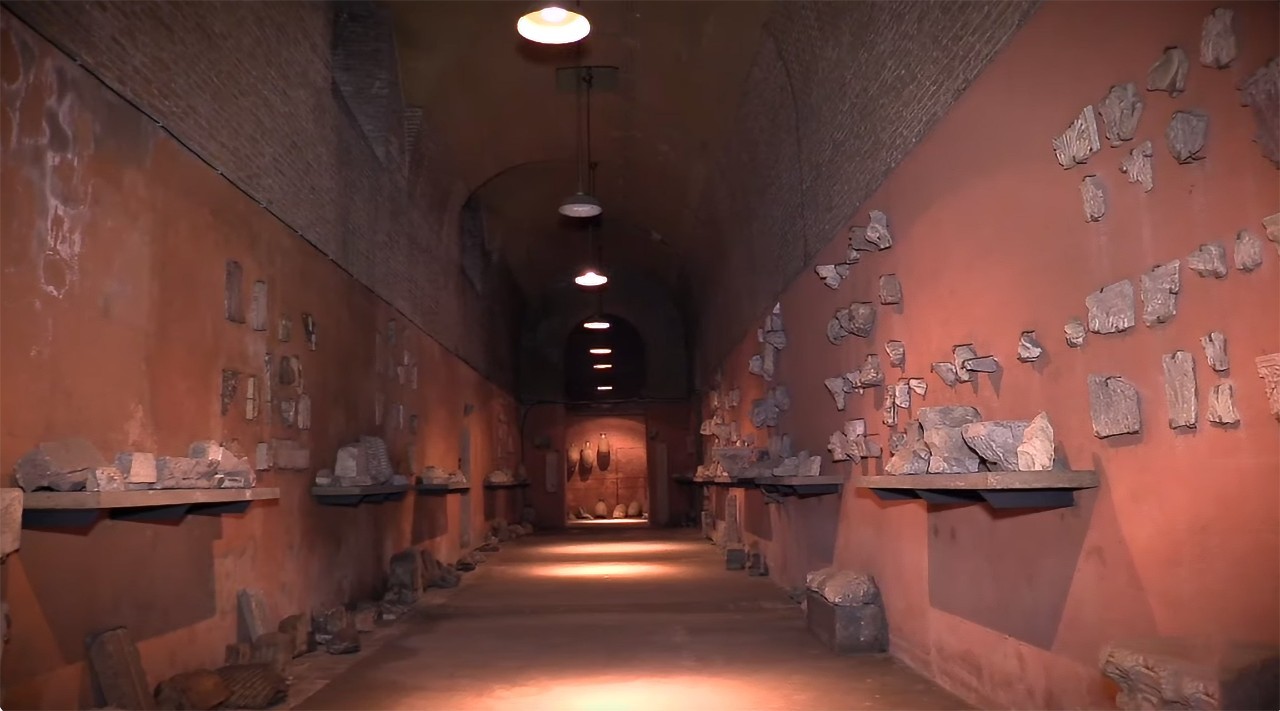The Patriarchate, founded by Pope Sylvester I, pontiff under the emperor Constantine, housed the residence of the bishop of Rome, developed around the Lateran Basilica and Baptistery. It is clear that over time the structure of the papal residence has changed, and only the Sancta Sanctorum and the mosaic of the triclinium of Leo III, remodelled over the years, still remain of the ancient palace. Of all the other buildings and all the other decorations of the Patriarchate, there remains only the description in the Liber Pontificalis which attests to its majesty and greatness. One must imagine, therefore, an area rich in chapels, large halls for ceremonial banquets, and the presence of various triclinia, all richly furnished. After the Avignon exile, however, this area fell into decline, and was abandoned as the papal residence in favour of the Vatican hill.
Renovation work on the square in front of the Basilica of Saint John Lateran, in view of the Jubilee of 2025, has uncovered part of the Patriarchate, as well as buildings that belong to an even earlier period. These discoveries have been made only now, as previously no real excavations had been undertaken, only resurfacing work on the Square, which did not extend beyond a depth of 50 cm.
One of the most significant discoveries of these most recent excavations is the recovery of the perimeter walls that defended the Basilica and the Patriarchate, dating from the ninth century. This date also confirms that erection of the Leonine wall, at the behest of Leo IV, around Saint Peter’s, and the construction of the fortification walls ordered by John VIII around Saint Paul’s Basilica. In all likelihood, therefore, just as it was intended to defend these two basilicas, it was also intended to protect the Patriarchate and the Lateran Basilica.
Numerous elements of masonry from the Severan period have also been fund, referring to what would have been the barracks of the Castra Nova Equitum Singularium, the cavalry guard chosen and later disbanded by the emperor Constantine.
The excavations therefore recall all the stages in the life of the patriarchate and its use throughout the centuries, and remain to this day as valuable testimony of the history of the Church.


